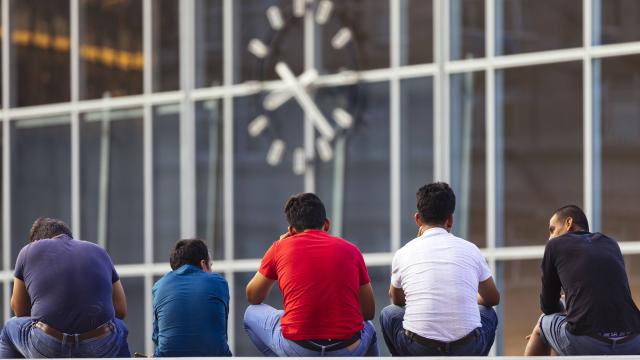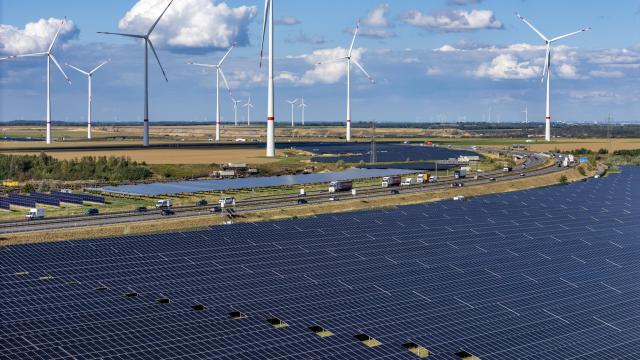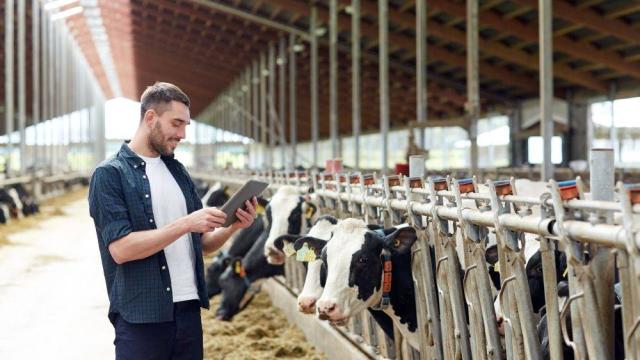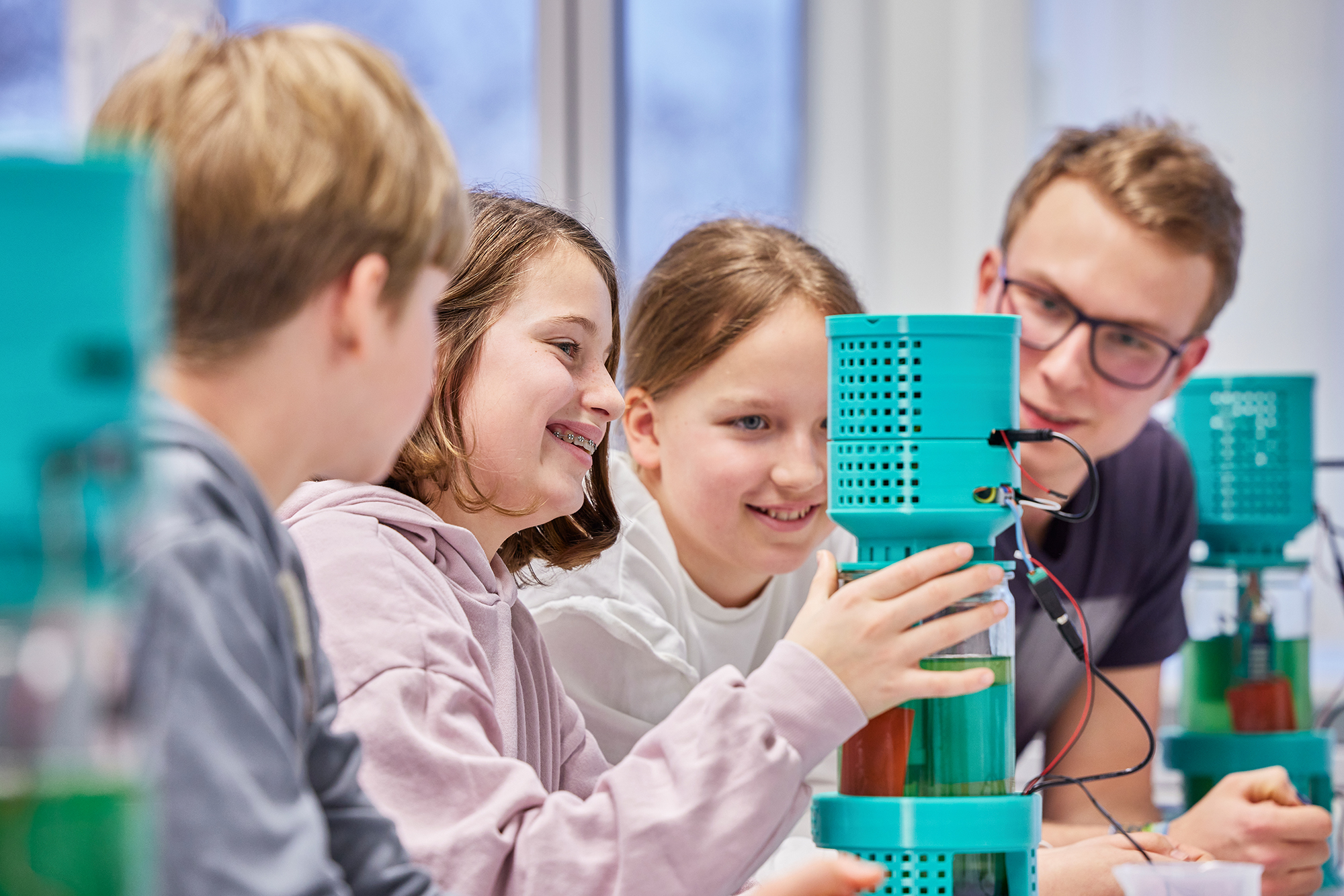

When environmental awareness catches on in schools
How can we raise awareness of sustainability? How can we sharpen environmental awareness? How can we change the way we think about economic processes? One approach is to confront students with the associated problems and provide them with knowledge, values, and options for action that have been verified both scientifically and didactically. Dorina Strieth and Alexander Engl work together as a team: the bioprocess engineer and chemistry teacher develop interactive programs for students.
Subject-specific teaching expertise illustrates complex topics
Dorina Strieth is very satisfied with this cooperation: “As subject specialists, we benefit from the subject-specific teaching methods. They have learned how to make complex topics understandable.” Three projects funded by the Carl Zeiss Foundation have emerged from this. And building on this, the CEASless project funded by the German Federal Environmental Foundation. CEASless means “unending” and in this case stands for Circular Economy – Algae in the School Laboratory Experiment.
What is behind this? “The circular economy should be understood as an alternative to conventional economic cycles,” summarizes Alexander Engl, “a move away from always just taking from nature, so to speak.” The idea behind it: In our consumer society, many processes are primarily linear. This means that goods are used once, then manufactured and disposed of. “But this pushes the Earth's resources to their limits and contradicts the idea of sustainability,” says Engl.
Solutions for sustainable agriculture
As part of CEASless, students in grades 10 to 13 are looking at alternative economic processes in agriculture. The project thus addresses a key industry and focuses on achieving environmental goals: “Around 50 percent of Germany's land is used for agriculture,” emphasizes Alexander Engl.
Agriculture is an important employer and ensures a high level of food production. However, the other side of the coin is that it also generates high levels of nitrogen compounds: “This is mainly due to the excessive use of nitrogen fertilizers,” explains Dorina Strieth. It is precisely these high nitrogen levels that cause problems: “Overfertilization produces harmful gases such as ammonia and nitrogen oxide. At the same time, ammonium and nitrate enter the groundwater, polluting drinking water supplies.”
Overfertilization also causes nitrate in the soil to be broken down into nitrous oxide, which is 300 times more harmful to the climate than CO2.” Overall, overfertilization damages the soil's microbiome, i.e., all the microorganisms living there, which in turn affects growing conditions.
Microalgae as a model organism
Together with school students, Dorina Strieth and Alexander Engl are therefore investigating whether a sustainable transformation of agriculture is possible. More specifically, they are investigating whether such a transformation could be achieved with the help of cyanobacteria (historically often still referred to as microalgae). The bioprocess engineer explains: “We are looking at these model organisms because they could contribute significantly to sustainability in the context of agriculture.” Through photosynthesis, they can absorb CO2 from the air, just like plants. “At the same time, they can fix nitrogen from the air.”
Dorina Strieth analyzes scientific relationships in the laboratory. Based on this, Alexander Engl has developed specific offerings for school students: “In addition to the requirements specified in the curriculum for the respective age group, we naturally also ensure that the offerings can be implemented cost-effectively and thus also be carried over into schools.”
Raising awareness of environmental issues
Engl specifies six points that are central to CEASless: “These are recycle, refuse, reuse, reduce, repair, and rethink.”
Since January 2023, the researchers have been conducting four-day project weeks with schoolchildren to teach them the six principles of the circular economy using a variety of methods and materials. “On the first day, there is an introduction at the respective school,” explains Alexander Engl. The initial aim is to make the concept of the circular economy tangible and to address the challenges facing agriculture. The students learn relevant technical terms and then use journalistic methods to produce a news report, for example for the daily news or for social media in the form of a TikTok video or an Instagram post.
"The central question behind the discussion is: How can we produce enough food for everyone on limited agricultural land while reducing the use of nitrogen-based fertilizers?”
Alexander Engl
Then, under the premise of recycling, i.e., conversion, the technical basis of the biogeochemical nitrogen cycle is explored in a digital learning module. This shows how the different nitrogen compounds are converted into one another, but also where the natural cycle is thrown out of balance by overfertilization.
On the second day, based on the premise of “refuse,” the students learn that microalgae, which release bioavailable ammonium ions, can replace artificial fertilizers. For the “reuse” requirement, the students work in small groups to learn how different things can be reassembled in the most sensible way possible: Using a modular system, they build a photobioreactor from everyday materials, 3D-printed parts, low-cost sensors, and a microcontroller, which they then use for subsequent experiments. “In the process, the students also learn how microalgae are cultivated, and which parameters enable optimal growth,” explains Engl.
Conducting experiments in the laboratory
The third day takes place in the laboratory, where the students set up model experiments and evaluate the results. There are three experiments in total, all based on the principle of “reduce.”
The aim is to show that microalgae can reduce ammonia in the atmosphere in air washing systems. Background: Ammonia is a gaseous nitrogen compound that is sometimes formed on agricultural land. Released ammonia spreads in the air, reacts with other air pollutants, and forms fine dust.
In the model experiment, loofah sponges (which, unlike plastic sponges, are 100% compostable as a natural product) are placed in two boxes, either soaked in water or with microalgae growing on them. “The air is then enriched with ammonia and the ammonia concentration is measured using a sensor on a microcontroller,” explains Alexander Engl: “The aim is for the students to recognize that microalgae can break down ammonia.”
In another experiment, the students learn about the potential of microalgae for drinking water treatment plants. Alexander Engl explains: “Microalgae metabolize nitrate, which pollutes the water, and convert it into biomass.” In the model experiment, microalgae are cultivated in a nitrate solution for several days and samples are taken. The nitrate concentration is measured with a photometer, and the students discover that this – a drinking water contaminant caused by overfertilization – can be reduced.
In the third model experiment, soil in a box is fertilized with either microalgae or artificial fertilizer in the form of ammonium sulfate. The ammonia concentration is measured using a sensor. The students learn that the formation of harmful gases such as ammonia and climate-damaging gases such as nitrous oxide can be prevented.
And under “Repair,” the students work out how microalgae can be used to regenerate agricultural soil. Overfertilized soil damages the microbiome, which has a negative effect on water absorption. In the experiment, soil is fertilized with either microalgae or artificial fertilizer in the form of ammonium sulfate, and then water is added. While the water quickly seeps into the soil in the sample with microalgae, the water still stands on the artificially fertilized soil even after three minutes.
Role play and panel discussion
On the fourth day, the findings are compiled – thus taking into account the “rethink”: The students perform a role play with a panel discussion. Alexander Engl explains: “They take on different roles, for example as representatives of an NGO, from politics, science or agriculture.” The central question behind the discussion is: “How can we produce enough food for everyone on limited agricultural land while reducing the use of nitrogen-based fertilizers?” The role-play and the associated change of perspective are intended to promote the students' evaluation skills and ability to argue.
Subject-specific research examines added value
And how is the success of such a project measured from a subject-specific teaching perspective? Alexander Engl: “We conduct surveys with the students.” This is done using an evaluation form that is distributed on both the first and fourth days. In this way, participants are asked how their understanding of sustainability and nature has developed: "So, what happened during the project? Has their attitude toward environmental issues changed? “ In order to be able to test the effectiveness on a larger scale, the researchers are conducting several project weeks with schools in the surrounding area.” We are also working with the University of Osnabrück, which also offers circular economy courses to students. Our questionnaire is being used there, and their questionnaire is being used here."
“As subject specialists, we benefit from the subject-specific teaching methods. They have learned how to make complex topics understandable.”
Dorina Strieth
Are there any findings yet? Alexander Engl: “The results from the preliminary study show that the materials used promote motivation and are designed to match the abilities of the target group in terms of their requirements.” Furthermore, it was shown “that personal concern and self-efficacy as relevant influencing factors for promoting environmentally friendly behavior changed significantly and positively over the course of the project week.”
The learning materials have been incorporated into courses for future teachers – for example, in the B. Ed. Chemistry program as part of the “Environmental Chemistry Project” seminar and in the B. Ed. Biology program as part of the “Basic Chemistry Lab” course. Alexander Engl: “We have also already received inquiries from our partner schools for a project week in 2026.” In general, however, all materials are freely available as open educational resources on the website – “and can therefore be integrated into teaching without our involvement.”
What are the next major steps? Alexander Engl: “We want to develop projects based on this.” These will also involve virtual reality, for example. One example is a dystopian scenario “in which, soon, you find yourself on a planet where there is not much left. The only thing that still exists is microalgae. How can you use it to grow food?” The subject didactician and subject specialist have no shortage of ideas for joint projects. Dorina Strieth is enthusiastic: “It's also a lot of fun.”
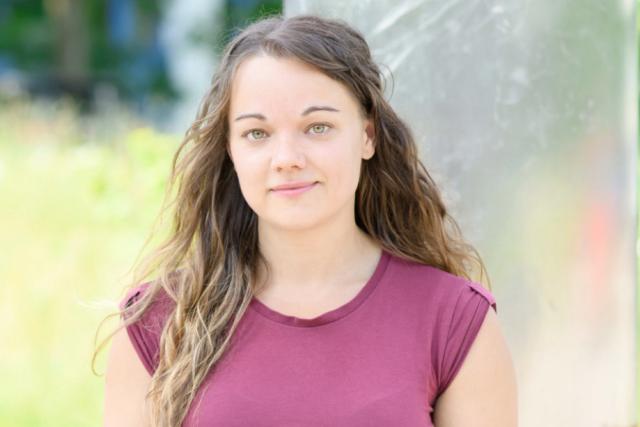
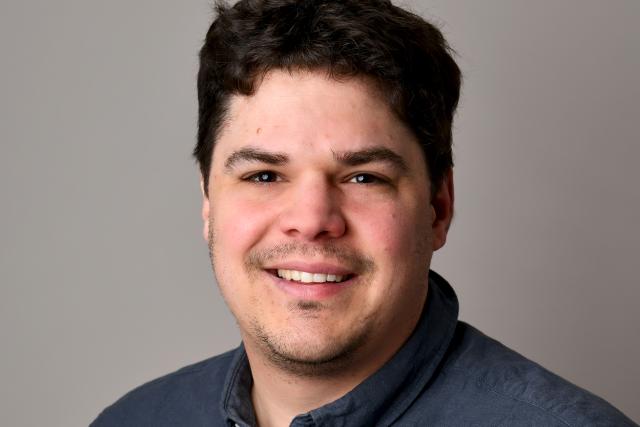
Want to know more about this topic?
Then check out these scientific publications:
Geuer, L., Erdmann, N., Kollmen, J., Otteny, A., Wastian, K., Wallrath, S., Engl, A., Risch, B., Ulber, R. & Strieth, D. (2025). Educational approaches to bioprocess engineering using DIY bioreactors for scientific literacy. Education Sciences 15(3), 323;
>> VIEW PAPER
Risch, B., Bier, T., Engl, A., Jupke, I., Strieht, D., Wallrath, S., Weinberger, P. & Zachert, I. (2024). CEASEless: Circular Economy begreifen – Algen im Schülerlabor erforschen. In: LernortLabor – Bundesverband der Schülerlabore e. V. (Hrsg.), Es geht rund im Schülerlabor. Circular Economy vermitteln. S. 26-33.
Wallrath, S., Engl, A., Erdmann, N., Kollmen, J., Strieth, D. & Risch, B. (2023). Mikrocontroller als Low-Cost Technologie: Monitoring von Wachstumsparametern bei Mikroalgen in einem 3D-gedruckten IoT-Photobioreaktor. MNU journal, 76(5), 360-365.
Risch, B., Zachert, I., Engl, A., Przywarra; T. & Strieth, D. (2023). Circular Economy Begreifen – Algen im Schülerlabor Erforschen (CEASEless). In: van Vorst, H. (Hrsg.), Lernen, Lehren und Forschen in einer digital geprägten Welt. Gesellschaft für Didaktik der Chemie und Physik, Jahrestagung in Aachen 2022. S. 616-619.
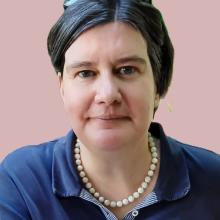
These topics might also interest you:
